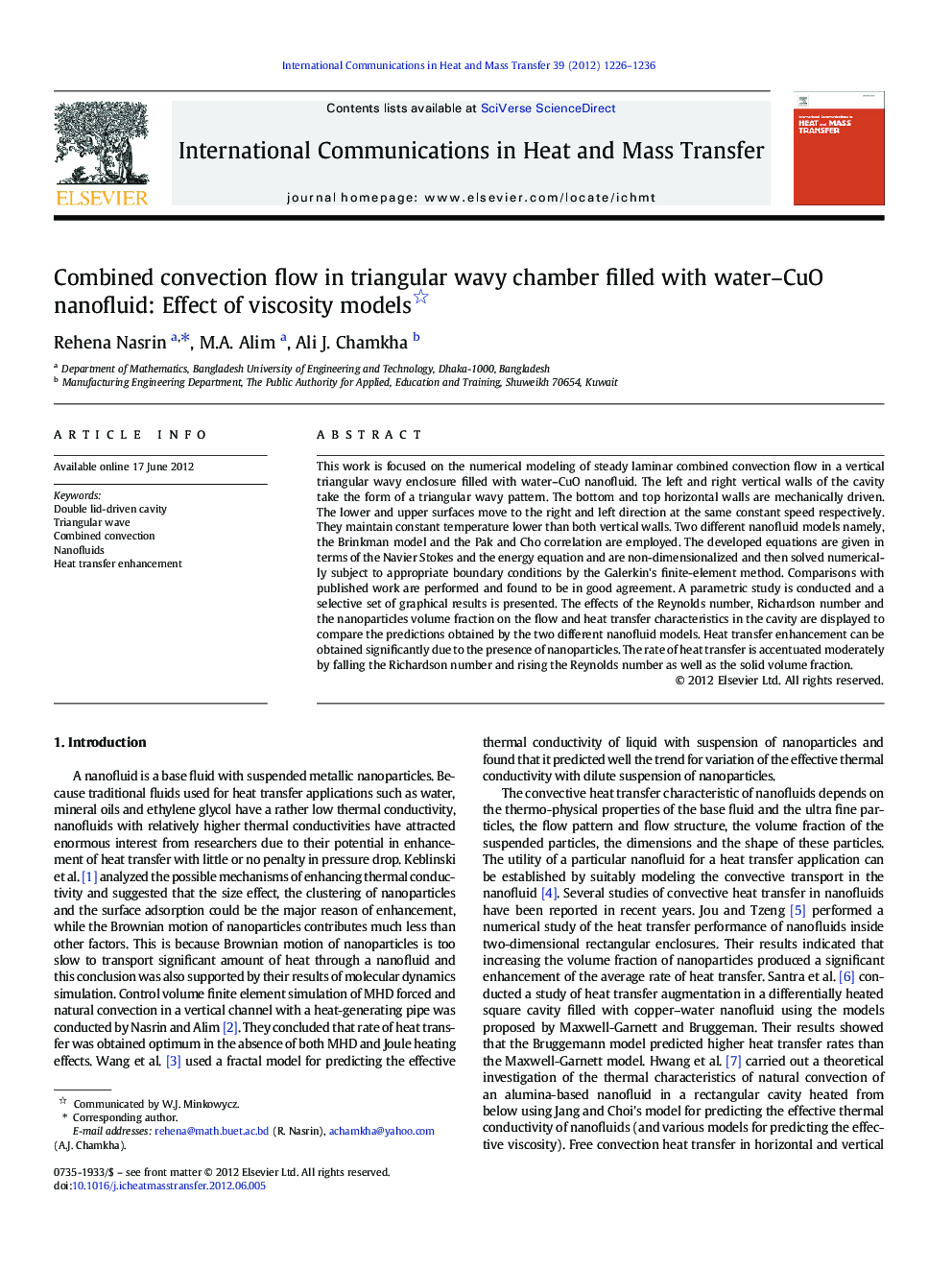| Article ID | Journal | Published Year | Pages | File Type |
|---|---|---|---|---|
| 653720 | International Communications in Heat and Mass Transfer | 2012 | 11 Pages |
Abstract
This work is focused on the numerical modeling of steady laminar combined convection flow in a vertical triangular wavy enclosure filled with water-CuO nanofluid. The left and right vertical walls of the cavity take the form of a triangular wavy pattern. The bottom and top horizontal walls are mechanically driven. The lower and upper surfaces move to the right and left direction at the same constant speed respectively. They maintain constant temperature lower than both vertical walls. Two different nanofluid models namely, the Brinkman model and the Pak and Cho correlation are employed. The developed equations are given in terms of the Navier Stokes and the energy equation and are non-dimensionalized and then solved numerically subject to appropriate boundary conditions by the Galerkin's finite-element method. Comparisons with published work are performed and found to be in good agreement. A parametric study is conducted and a selective set of graphical results is presented. The effects of the Reynolds number, Richardson number and the nanoparticles volume fraction on the flow and heat transfer characteristics in the cavity are displayed to compare the predictions obtained by the two different nanofluid models. Heat transfer enhancement can be obtained significantly due to the presence of nanoparticles. The rate of heat transfer is accentuated moderately by falling the Richardson number and rising the Reynolds number as well as the solid volume fraction.
Related Topics
Physical Sciences and Engineering
Chemical Engineering
Fluid Flow and Transfer Processes
Authors
Rehena Nasrin, M.A. Alim, Ali J. Chamkha,
